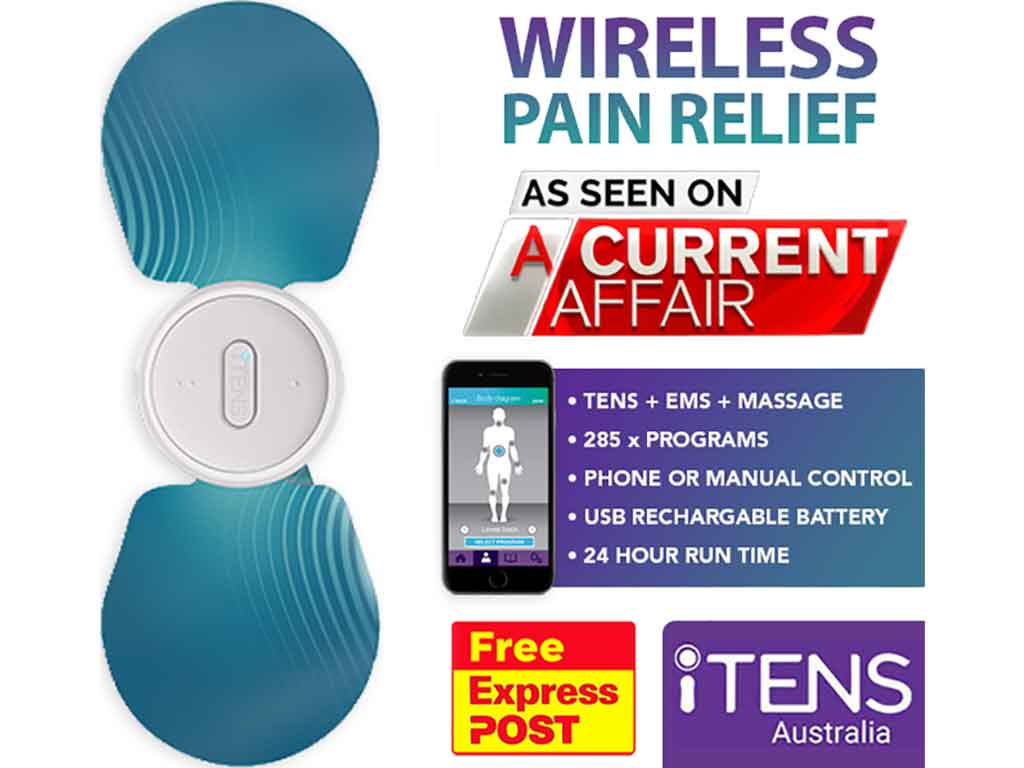
Low back pain transcutaneous electrical nerve stimulation is a method of pain relief. It works by either blocking pain signals or triggering the release of endorphins. These are natural painkillers produced by the body. This therapy involves a handy, portable device that delivers low-voltage electrical impulses to the affected area through electrodes placed on the skin. TENS is popular because it provides pain relief without the need for traditional medications or invasive procedures.
Some individuals choose to allow low back pain to resolve naturally. They also use painkillers to alleviate the discomfort temporarily. However, this can lead to negative consequences that may appear in the future. Alternatively, they can utilise Transcutaneous Electrical Nerve Stimulation (TENS) as a safer and more effective alternative. This article will present what is a TENS device for lower back pain, including its mechanism of action and beneficial effects.
What is a Low Back Pain Transcutaneous Electrical Nerve Stimulation?
A low back pain transcutaneous electrical nerve stimulation for the lower back is a method of pain relief. It utilises a portable electronic device with a pair of adhesive electrode pads. When placed on the skin, the pads deliver low-voltage electrical currents to stimulate the underlying nerves. The strength of the currents is adjustable based on the pain or tolerance level of the individual.
TENS machines come in two types: standard and wireless. A standard or traditional unit has a handheld control and wires that connect to the pads. On the other hand, a wireless TENS machine has a compact power generator that attaches the electrode pads. These pads are slim and flexible and are suitable for multiple areas of the body.
Furthermore, the TENS units come with several features. Aside from customisable programs, some offer preset modes. These are selectable options with predefined settings. Therefore, users can choose a desired therapy from the menu to start treatment immediately. Moreover, the electrical stimulation device utilises either replaceable or rechargeable batteries. Most wireless TENS machines are rechargeable, making them more cost and energy-efficient.
Importance of Effective Pain Management
- Effective pain management enables individuals to engage in daily activities with greater ease, promoting an improved overall quality of life.
- It accelerates the healing process, allowing individuals to recover more quickly from injuries or medical procedures.
- Addressing pain effectively contributes to mental health by reducing stress and anxiety associated with persistent discomfort.
- Pain management enables individuals to focus on tasks and responsibilities, enhancing productivity in both personal and professional spheres.
- Managing pain ensures better sleep quality. This is crucial for overall health and well-being.
- It can prevent acute pain from developing into chronic low-back pain.

Mechanisms of Actions When Using Low Back Pain Transcutaneous Electrical Nerve Stimulation
One mechanism of action when using low back pain transcutaneous electrical nerve stimulation is the release of endorphins. Endorphins are natural chemicals in the body that act as pain relievers. The electrical stimulation from TENS can trigger the release of endorphins, which can help reduce pain perceptions.
Another mechanism of action is the pain gate mechanism. This mechanism involves the stimulation of sensory nerves, which can help block the transmission of pain signals to the brain. By blocking these signals, TENS can help alleviate neuropathic or musculoskeletal pain in the lower back.
Lastly, TENS can help boost blood circulation to the affected area. This can help promote the healing process and reduce inflammation. Additionally, the analgesic effects of treatment help acute or chronic pain patients. Users should be mindful not to place the electrodes directly over the spine to avoid any potential interference with the spinal cord. Overall, TENS can be an effective treatment option for low back pain, with treatment duration and frequency of use varying depending on individual needs.
Low and High Frequencies
The pulse rate or frequency of the stimulation can be adjusted to accommodate varying needs or preferences. Low-frequency TENS stimulation at 10 Hz and below can decrease nerve sensitivity. It can trigger the release of endorphins. This is suitable for chronic pain conditions. Furthermore, low vibrations give massaging effects.
High-frequency TENS (50-120 Hz) stimulates sensory nerves to inhibit pain. It has short electrical impulses and intensity, often characterised by strong but comfortable sensations. This is a suitable setting for people with acute pain. However, it is essential to start with low-frequency TENS for a few minutes and gradually increase the intensity to a comfortable level.

Benefits of Low Back Pain Transcutaneous Electrical Nerve Stimulation
Low back pain transcutaneous electrical nerve stimulation offers several beneficial effects. For instance, it provides a drug-free and non-invasive alternative to other medical treatments. This is especially beneficial for individuals who may be sensitive to or unable to take certain medications. Additionally, TENS can be used as a daily treatment without the risk of side effects associated with some drugs.
Additionally, its customisable settings allow users to adjust the intensity and frequency of the electrical nerve stimulations. This personalisation makes it a versatile tool that they can tailor to different acute and chronic pain conditions. It can also be easily incorporated into an exercise program or physical therapy regimen. This complements other forms of treatment, further enhancing health outcomes and functional improvement.
Furthermore, TENS provides localised pain relief, targeting the specific area of discomfort in the lower back. This targeted approach does not impact surrounding healthy tissues or organs. Moreover, it often results in faster onset and more immediate relief.
Are There Potential Side Effects?
In rare cases, electric nerve stimulation can have potential side effects. For instance, skin irritation at the site of the device stimulation. This can range from mild redness to more severe rashes or burns, especially if the TENS unit is used for extended periods.
Another potential side effect is muscle spasm. While the device is intended to help relieve muscle pain, some individuals may experience spasms. This can be particularly problematic for those with pre-existing muscle conditions or injuries. Carefully monitoring the duration of TENS use and consulting a healthcare professional is crucial if muscle spasms become a concern.
Conclusion
Low back pain transcutaneous electrical nerve stimulation offers relief by triggering endorphin release and employing the pain gate mechanism. It also enhances blood circulation, aiding healing and reducing inflammation. TENS is available in both standard and wireless forms. It also has customisable settings or preset programs. People can use high frequencies for acute pain, while low frequencies are appropriate for chronic pain. Being mindful not to place electrodes directly on the spine is essential.
There are several benefits the TENS offers for users with low back pain. For instance, TENS stands out as a drug-free and non-invasive option, catering to individuals opposed to medications. Its customisable settings empower users to tailor treatments, seamlessly integrating them into daily life or therapy programs. TENS also offers localised relief without impacting surrounding healthy tissues or organs. Those people interested in wireless TENS devices can check out iTENS Australia.




















